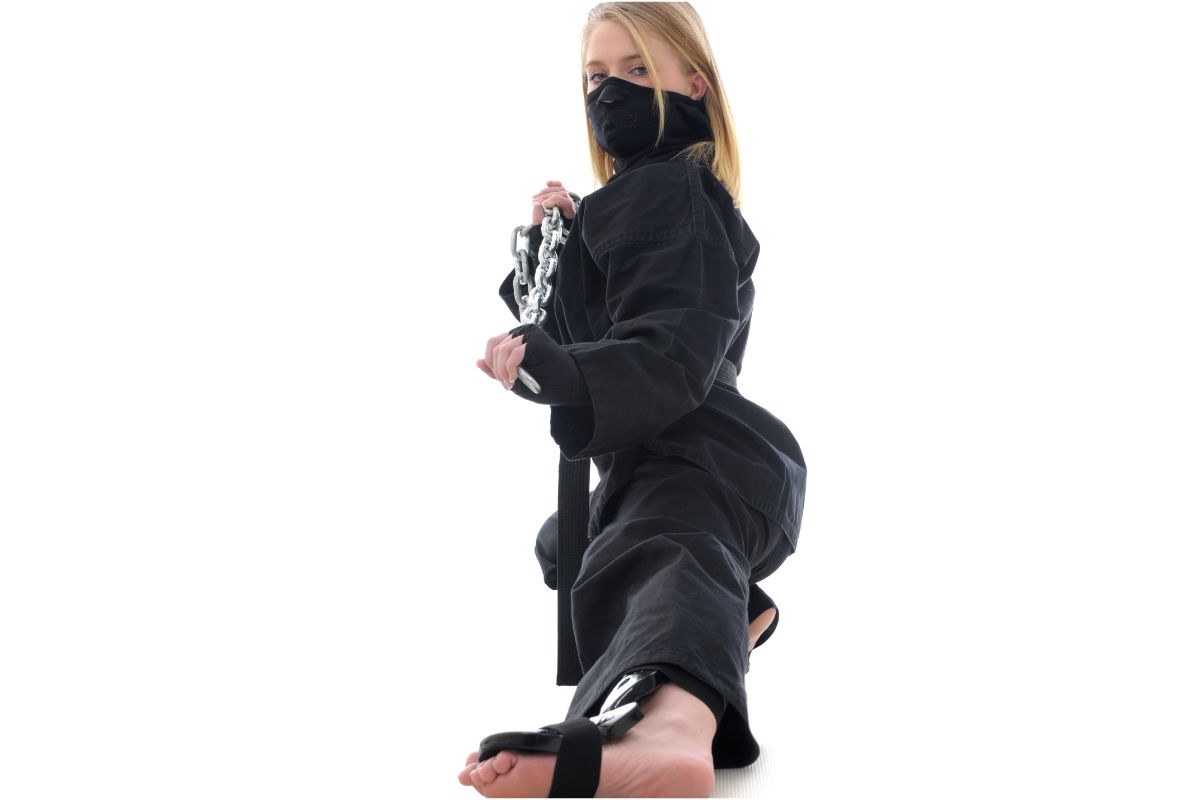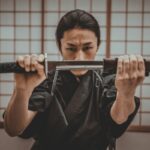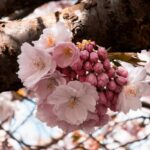If you are interested in Japanese culture, then chances are you have heard of ninjas and their mantras.

Ninjas remain a notable trope in various media, as they often feature in movies and television, where they are presented as assassins and villains. However, in the real world, ninjas are practitioners of ninjutsu and are sometimes referred to as shinobi.
While they may not have supernatural powers, they do come from an ancient order and have an important place in Japanese history and culture.
However, this does not mean that the order is reserved for men, as there are also female ninjas known as kunoichi. In this article, we will take a detailed look at the kunoichi order and how it has evolved in present-day Japan.
So if you want to learn more about these mysterious warriors, then you have come to the right place.
What Is A Kunoichi?
The term kunoichi is often used to describe a female ninja, however, the term itself is more associated with media than it is with Japanese culture. In fact, the name kunoichi was first coined in the 1960s, when author Futaro Yamada used the term in his novel Ninpo Hakkenden.
Despite their appearance in various novels, movies, and manga – there is little evidence that kunoichi existed in historical Japan, as few records discuss the use of female warriors and their role in battle.
However, this erasure could be connected to patriarchal standards, as a book from the 17th century did make reference to female ninjas. In fact, the book described a technique called kunoichi-no-jutsu, which translates to ninjutsu of a woman.
While the existence of kunoichi is still questioned, their role in Japanese culture cannot be denied, whether that be as historical warriors or fictional heroes.
What Does Kunoichi Mean?
The word kunoichi is derived from the names of Japanese characters that mimic the three strokes in the character onna (女) which is the kanji term for woman. When the character is broken down, it takes on the following order:
- (く) = this character is pronounced as ku
- (ノ) = this character is pronounced as no
- (–) = this character is pronounced as ichi and means one
While the term is often used to describe a female warrior, the character translates to nine plus one. In Japanese culture, it was believed that women should have ten holes on their bodies, which included the eyes, ears, and mouth.
This was in contrast to men, who were expected to have nine.
However, the exact origins of this faction have been thrown into question, as there are many ways the name can be interpreted.
What Was Their Role In Japanese Society?
The existence of female warriors was first recorded in the bansensukai, a manual on ninjutsu tactics and warfare.
In its pages, the book described a technique called kunoichi-no-jutsu, which translates to the technique of a woman. The book also made reference to the kunoichi’s role as an assassin, as they would use their gender to enter enemy houses and eliminate their targets.
They also recorded secrets and sold them to rival factions.
Because of their gender, kunoichi were often undermined by the men around them, which made it easier to enter their homes. In fact, most kunoichi would pose as geishas (see also ‘Do Geishas Still Exist?‘), maids, and servants to reach their target and kill them.
In certain cases, they were also taken as concubines and mistresses.
If a kunoichi was exposed, they would use confusion tactics to escape. This could involve tearing off their clothes and screaming at their enemies.
What Weapons Did Kunoichi Use?
Like shinobi, female warriors were trained to use a range of weapons, such as small blades and katanas.
Out of these weapons, one of the more notable was the tessen, which took the form of an ornate fan made from metal. Since fans were not considered a threat, kunoichi were able to conceal them in their robes or on their person.
This allowed them to kill their enemies without raising suspicion.
However, the most popular weapon in the kunoichi’s arsenal was the neko-te, which were large metal claws attached to leather gloves. These claws could measure from one to three inches and were used to shred an enemy’s skin.
In certain cases, the neko-te could even be coated in poison, which would infect the wounds and result in a quicker death.
What Are Onna Bugeisha?
The term onna-bugeisha was used to describe noblewomen with training or experience in battle.
In most cases, these women were the brides of samurai warriors and would fight alongside their husbands in times of great need. Because of this, their tactics were different from those of the kunoichi, as they were not used as spies or assassins.
It is also important to note that ninjas and samurai use different martial arts and weaponry, which is another distinction between the two factions (for more information about the difference between Ninjas and Samurais, check out our guide here).
As mentioned above, kunoichi used stealth and confusion to combat their opponents, they were also trained as spies and assassins. In contrast to this, onna-bugeisha were used on the battlefield and used curved polearms to beat their enemies.
The Importance Of Kunoichi
While the existence of female warriors is still disputed, the little evidence we have is enough to confirm the kunoichi’s importance in Japanese culture.
Beyond the pages of the bansensukai, there are other accounts that lend credence to the role of female warriors.
For example, a disputed document from the 16th century described a secret network of female spies, which had been recruited by the notable warlord Takeda Shingen.
Despite this, female ninjas remain a popular trope in Japanese media and continue to show up in movies and television. A women’s football team even adopted the name in the 1970s, which further demonstrates its notoriety.
Final Thoughts
In basic terms, kunoichi are female ninjas (see also ‘Are Ninjas Real?‘), who were once used to enter enemy houses and assassinate rivals.
While their existence is still disputed, their importance to Japanese culture is undeniable, as female warriors often feature in books, comics, and films
- Transport in Japan: Exploring Buses, Public Transportation, Railways, Bicycles, and Major Cities - April 3, 2024
- Exploring Japan: Prefecture and Regions of Japan - April 3, 2024
- Travel Guide: Visiting Mount Koya (Koya, Mount Koya, Koyasan) – A Pilgrimage to the Spiritual Heart of Wakayama in Kansai, Japan - April 2, 2024








